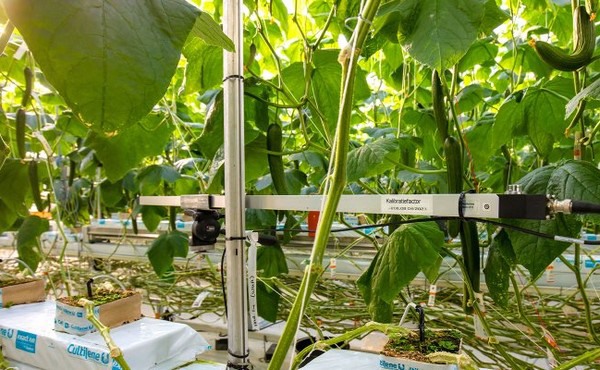Being a grower is becoming an increasingly complex task, especially as growing areas grow. More is at stake, and the number of factors to take into account increases. Autonomous cultivation can then be a welcome support. It means that an algorithm takes care of daily crop growing decisions, leaving the grower time for other tasks. The Business Unit Greenhouse Horticulture and Flower Bulbs of Wageningen University & Research (WUR) is working on systems that generate the appropriate cultivation decisions. Such an algorithm currently controls a cucumber crop in a test greenhouse.
In model-driven cultivation, an algorithm receives information from various sources and processes it into a cultivation strategy. Information on, for example, retail demands like the desired fruit size or particular harvest date, information about the greenhouse equipment, prices of inputs like energy and CO2, and the product price. Using sensors and measurements, the algorithm obtains information about the crop (such as light interception and leaf formation rate) and the greenhouse (for example, temperature and CO2 concentration). In addition, the algorithm is fed with weather data and, especially, the few days ahead weather forecast.

Based on this, the algorithm continuously calculates which strategy is best for, amongst others, watering, CO2 dosing, and temperature. In order to do so, the algorithm uses models describing the relationship between greenhouse climate and crop growth. The algorithm also calculates the most energy-efficient strategy, making use of the flexibility of the crop. This means that, in a strategic way, colder days are being compensated by warmer days. The algorithm is also constantly self-calibrating by comparing the expected results with the measured, actual results.
WUR is now testing the method described above in cucumber cultivation in a test greenhouse in Bleiswijk. This is in preparation for fully model-driven cultivation that will start next year as part of the AGROS research program. With this project, knowledge and experience on model-driven cultivation will be shared with the sector. This will contribute to lifting this technology sector-wide to a higher level. AGROS is financed by 16 partners and the government subsidy program for research in Horticulture and Plant Propagation.
 For more information:
For more information:
Wageningen University & Research
www.wur.nl
